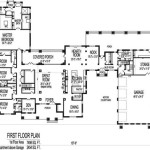Window Size Requirements for Bedroom Egress
Egress windows are an essential safety feature in any bedroom, primarily intended to provide occupants with a reliable escape route in the event of a fire or other emergency. Building codes mandate specific requirements for these windows, focusing on dimensions and ease of operation to ensure they can be used effectively by anyone, including children and the elderly. Non-compliance with these codes can result in construction delays, fines, and, most importantly, compromised safety for the occupants of the building. Understanding the regulations governing egress window size is, therefore, crucial for builders, homeowners, and anyone involved in residential construction or renovation.
The standards for egress windows are outlined in the International Residential Code (IRC), which is widely adopted across the United States, though local jurisdictions may have modifications or additional requirements. These codes are designed to balance safety concerns with practical building considerations, specifying minimum dimensions that are achievable in most residential settings. The core principle guiding these regulations is to provide a clear and unobstructed opening that is large enough for a person to climb through or be rescued through. This clear opening is sometimes referred to as the net clear opening.
The measurement of the egress window dimensions includes the height, width, and sill height (the distance from the floor to the bottom of the window opening). Each of these dimensions contributes to the overall accessibility and usability of the window as an emergency exit. Failure to meet these minimum standards can render a bedroom structurally unsafe in the eyes of the law.
Minimum Clear Opening Area
The most critical aspect of egress window requirements is the minimum clear opening area. This refers to the actual unobstructed space available when the window is fully open. The IRC specifies that the minimum clear opening area must be 5.7 square feet. This means that the product of the window's clear opening height and clear opening width must be at least 5.7 square feet. The purpose of this requirement is to ensure that the opening is large enough for a person to climb through, even when wearing bulky clothing or carrying a small child.
It is important to note that this is the *net* clear opening, meaning the actual usable space after accounting for any obstructions such as window sashes, frames, or security bars. The window manufacturer will usually provide the net clear opening dimensions for their products. This is a critical detail to confirm before purchasing or installing any window intended for egress purposes.
Calculating the required clear opening dimensions involves understanding the relationship between the height and width. For example, a window that is 24 inches wide (2 feet) would need to have a height of at least 34.2 inches (2.85 feet) to meet the 5.7 square feet requirement (2 ft * 2.85 ft = 5.7 sq ft). Similarly, a window that is 30 inches wide (2.5 feet) would need a height of at least 27.4 inches (2.28 feet). These are just examples; the specific dimensions will depend on the design of the window and the other requirements outlined in the code.
Window operators, like casement windows or awning windows, might offer a wider clear opening compared to sliding windows or double-hung windows, given the same rough opening size. This aspect should be considered when choosing the appropriate type of window for a bedroom requiring egress.
Compliance with the minimum clear opening area requirement is often verified during building inspections. It is therefore crucial to have accurate measurements and documentation to demonstrate that the installed windows meet the code.
Minimum Height and Width Requirements
In addition to the minimum clear opening area, the IRC also specifies minimum dimensions for the height and width of the egress window opening. The code requires a minimum clear opening height of 24 inches and a minimum clear opening width of 20 inches. These dimensions are intended to ensure that the opening is not only large enough in overall area but also provides sufficient space in both directions for a person to pass through comfortably.
The 24-inch minimum height requirement prevents very wide but short windows from being used as egress windows, even if they meet the 5.7 square feet area requirement. Similarly, the 20-inch minimum width requirement prevents very tall but narrow windows from meeting the code. Both of these dimensional requirements must be satisfied independently of the overall area requirement.
These height and width requirements are specifically designed to accommodate the average human body size and provide enough space for maneuvering during an emergency. A window that is too narrow or too short could hinder escape efforts and delay rescue attempts.
It is essential to carefully consider these dimensional requirements when selecting and installing egress windows. Working with a qualified contractor or window supplier can help ensure that the chosen windows meet all applicable codes and regulations.
When selecting windows for a bedroom, prioritizing egress compliance is of paramount importance. Failing to meet the minimum height, width, or area standards can have serious consequences during an emergency.
Maximum Sill Height from the Floor
The sill height is the vertical distance from the floor to the bottom of the clear opening of the egress window. The IRC specifies a maximum sill height of 44 inches. This limitation is designed to ensure that occupants can easily reach and climb through the window, even if they are smaller in stature or have limited mobility.
A sill height exceeding 44 inches can make it difficult for children, the elderly, or individuals with disabilities to use the window as an escape route. In such cases, additional measures may be required to facilitate egress, such as installing a permanent step or platform below the window. However, even with such additions, the window must still meet all other requirements for clear opening area, height, and width.
The maximum sill height requirement is particularly important in bedrooms located in basements or above the ground floor. In these situations, the sill height may be naturally higher than in ground-floor bedrooms. Builders and homeowners need to carefully plan the window placement and surrounding landscaping to ensure compliance with the code.
The placement of furniture near the egress window should also be considered. Furniture should not obstruct access to the window or impede the ability to open it fully. Clear access to the egress window is essential for its intended purpose as an emergency exit.
Some jurisdictions may have stricter limitations on sill height, especially in homes designed for accessibility. Always check local building codes to ensure compliance with all applicable regulations.
Meeting the maximum sill height requirement is achieved by careful planning during the design and construction phases. Accurate measurements and attention to detail are essential for ensuring that the installed windows are compliant and safe for occupants. This is frequently one of the most overlooked areas of compliance, so extra diligence is needed.
In summary, understanding and adhering to the egress window requirements is a critical aspect of home safety. The minimum clear opening area, minimum height and width, and maximum sill height are all essential factors to consider when selecting and installing windows in bedrooms. Compliance with these codes not only ensures the safety of occupants but also avoids potential legal issues and construction delays. Regularly inspecting and maintaining egress windows helps ensure their continued effectiveness as a vital safety feature of the home.
Beyond the specific dimensional requirements, other factors can affect the usability of an egress window during an emergency. These include the ease of opening the window, the presence of obstructions outside the window, and the overall layout of the room. A window that is difficult to open or blocked by landscaping features may not be an effective escape route, even if it meets the minimum size requirements.
Homeowners should regularly inspect their egress windows to ensure they are in good working order and free from obstructions. This includes checking the window hardware for corrosion or damage, clearing any vegetation that may be blocking the opening, and ensuring that the window can be easily opened from the inside. A well-maintained egress window is a valuable asset in protecting the lives and safety of occupants in the event of an emergency.

Egress Windows Sizing And Requirements Explained

Egress Window Sizing Arch Inspections Llc

Window Egress Definition Laws And What You Should Know Southwest Exteriors Blog

Egress Window Size Calculator Cost

Egress Window Size A Beginner S Guide Epp Foundation Repair

Window Egress For Bedrooms Exterior Inspections Internachi Forum

Egress Windows Size Requirements Pro Tips Before Installation

Understanding Egress Windows

Egress Window Requirements Explained With Illustrations

Egress Window Requirements For Home What To Know Carla Bast Design








